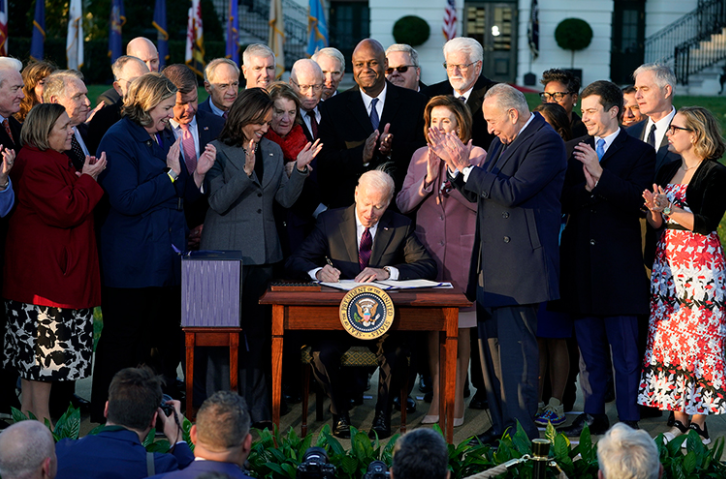What is our government doing about climate change?
Biden receives a round of applause as he finishes signing the bill.
November 30, 2021
President Biden signed a $1 trillion infrastructure bill on November 15 after it was passed in the House. The bill was designed to improve American life quality by making transportation access easier and more efficient, with money allied for the building and upkeep of bridges, water systems, dams and other projects related. The majority of the money will be used to improve infrastructure related projects, but a good portion will also be invested in climate resilience.
This bill addresses climate change in relation to how it impacts the country’s infrastructure, a term known as “climate resilience.” Seasonal wildfires, hurricanes and other natural disasters have raised in intensity over the past decade or so as a result of climate change. This means that communities will be able to afford the resources and relief they need as a result of this bill.
“It’s a big deal and we’ll build up our resilience for the next storm, drought, wildfires that indicate a blinking code red for America and the world,” President Biden said.
The 2021 investment in highways, roads, public transportation and water systems is the biggest since the 80s. Many officials believe that the changes in infrastructure, as long as they are implemented, will make the country stronger both industrially and environmentally. It’s believed that this investment will bring about positive, noticeable change in American citizens’ lives and create a more efficient transportation network.
Democratic House leaders also proposed a $555 billion climate change bill that would allocate funds for preventative measures. This includes around $300 billion of tax incentives being put towards wind, solar and nuclear power. Not enough support was garnered for it to reach the floor; however, those in favor have expressed their plans to persist.
The goal of the infrastructure bill is to improve the quality of life for Americans and to help relieve us of the effects of climate change. The bill is not meant to put an end to or stop climate change, rather, it’s meant to temporarily “fix” the problem.









